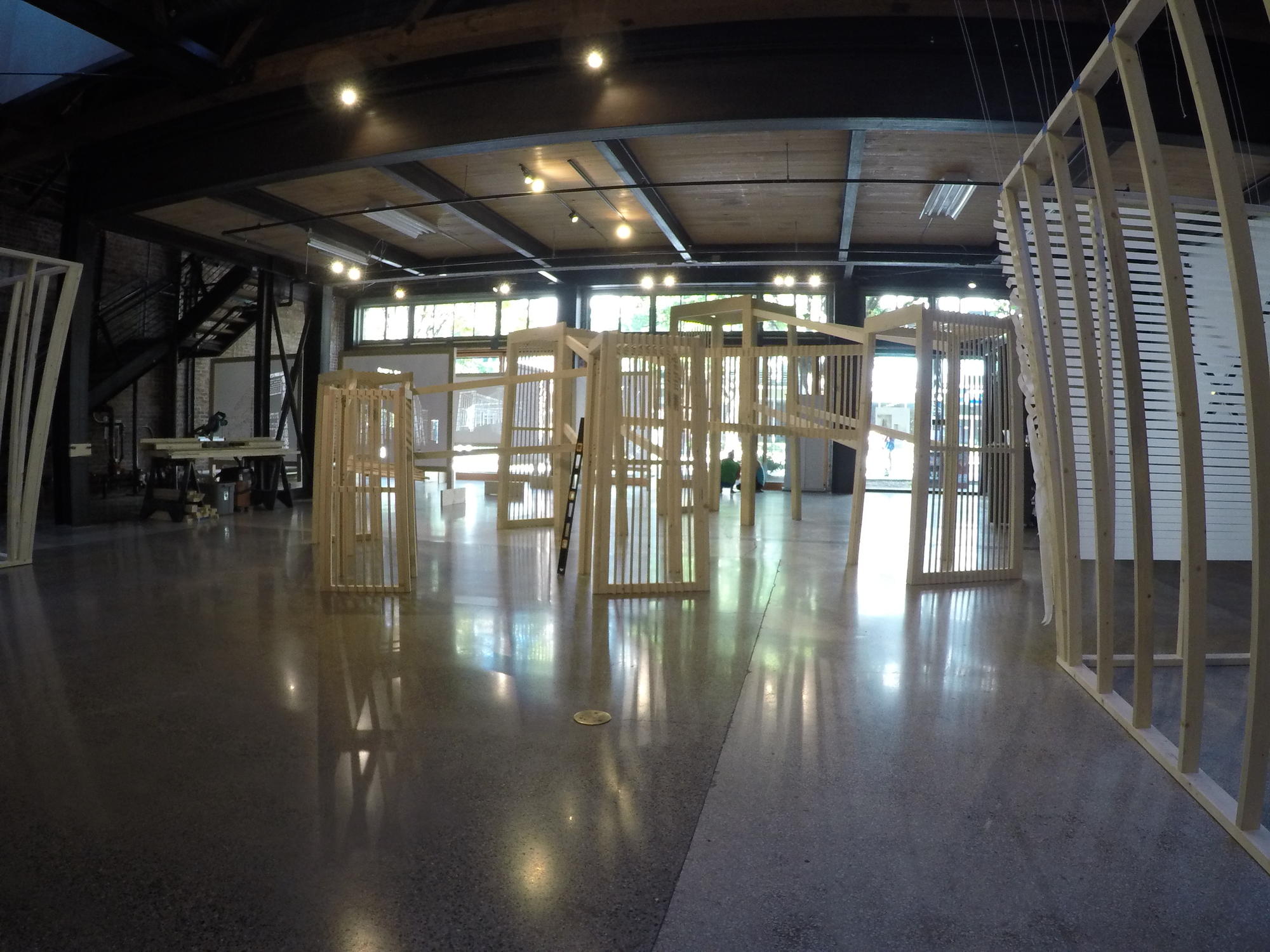While Goldhagen is addressing construction trends nationwide, it feels as if she’s speaking directly to Seattle — perhaps even specifically about South Lake Union, which, like Athena from Zeus, seemed to spring fully formed from the head of Paul Allen.

In the book, Goldhagen addresses how such massive, rapid-fire construction affects human well-being, memory, emotions and brain function. In a new installation at MadArt Studio in South Lake Union, local artist Katie Miller is exploring similar issues with a large-scale project called The Presence of Absence.
“What is the moment we realize something is missing?” Miller asks. It’s a question prompted by her own pedestrian-level experience with South Lake Union, which she regularly traversed even before her MadArt summer residency. “It seemed like perfectly fine buildings were disappearing week to week,” she recalls. “There are so many things missing now,” Miller says. “There is a presence to the things we’re missing.”
She decided to dig into this phenomenon because after all, she says, “My work is about voids.” Miller, who moved here from Minnesota in 1999, spends much of her artistic time meticulously cutting many-windowed architectural forms out of heavy stock paper. The voids allow light to pass through the cut-out spaces. In turn, shadows shift and change shape.
“Most of my work is related to light,” she says, a fact she attributes to growing up on a rural lake, where she was accustomed to seeing reflections, stars, and sometimes the Northern Lights.
Miller didn’t go to architecture school (she studied sculpture at UW and glass at Temple University), but she recently worked in the marketing department of Olson Kundig Architects, which required her to know the ins and outs of buildings. And in the distant past, she helped her mother and stepfather (home and furniture designers) build their house. “I’m just fascinated with human-made structures,” she says. “Especially the way we interact with structures.”

Accordingly, she’s created an installation that allows people to interact with her constructions in multiple ways. Next to MadArt’s large street-facing windows (a remnant of one of Seattle’s past construction booms, when suddenly auto showrooms were popping up all over town) sit seven of her paper cut-out screens. Tiny cuts amass to form large rectilinear shapes that recall construction sites, cranes, scaffolding and windows — openings that beckon onlookers to look through to the other side.
“When I walk around this neighborhood I notice how I can see into so many structures, and how all the lines intersect with each other,” she says. “I look up through scaffolding and see cranes above; I can see all the floors of open buildings at construction sites. New buildings reflect each other in windows. Plus the streetcar tracks — so many grids!”
In the middle of the studio, she’s constructed large timber forms that mimic those that have been cut out of the screens — positives to the negatives. Three connected entrances zigzag through the room, getting incrementally smaller. You have to crouch as you walk through; the last one feels definitely cramped. “You get the sense of feeling smaller as the structures get taller,” Miller says. “At some point you get corralled and kind of stuck, like you do walking around those orange construction barriers when sidewalks are closed.”
At the back of the space, Miller built two structures to mirror the building’s original skylight wells — deep trapezoidal buckets slatted with translucent mylar that hold the light pouring in from above. Walking inside feels like discovering a secret periscope to the sky.

All parts of the installation are in conversation with each other, as well as with the brick walls, steel girders and Terrazzo floors of the 1927 building housing them. Look across the room and the various lines intersect, creating a basket weave that seems to quiver. “There’s definitely an eye-buzzing thing that happens,” Miller says. “I like it because I’m always looking to mess with people’s perceptions and cause them to reevaluate their surroundings.”
Her hope is that after experiencing these stripped down microcosmic structures, people will pay more attention to what is happening outside, in the built environment of the real world. “I want to create an awareness people take with them when they leave the studio, a greater sense of what’s changing — on a large scale down to the subtle movements of light across buildings and sidewalks,” she says. “To me, that’s what makes the world magical.”
Crosscut arts coverage is made possible with support from Shari D. Behnke.



